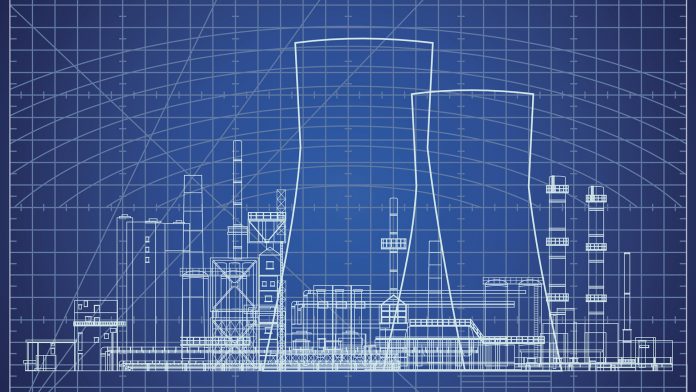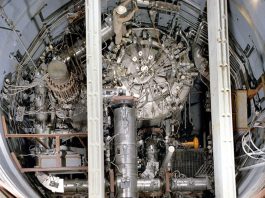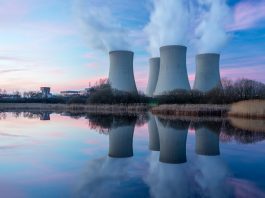Massimo Garribba, Deputy Director-General for Energy at the European Commission, discusses the current and projected future outlook for nuclear energy within Europe.
Today, nuclear power accounts for around a quarter of electricity and half of the low carbon electricity generated in the European Union (EU). Whilst the reception and adoption of nuclear energy by EU Member States remains mixed, it is expected that nuclear power will remain a significant source of electricity generation over the next 20 years.
In July 2022, EU lawmakers voted to label investments in nuclear power plants as ‘green’, on the condition that they switch to accident tolerant fuels from 2025 and set out plans for the final storage of radioactive waste from 2050. This move supports the EU’s commitment to achieving a carbon neutral economy by 2050 following the announcement of the European Green Deal in 2019.
Recent societal changes, particularly the war in Ukraine, have highlighted the urgent need for alternatives to fossil fuels. In response to this, the European Commission (EC) presented the REPowerEU Plan, setting out a clear strategy to reduce the EU’s dependence on Russian fossil fuels and to phase out Russian imports. In addition, the conflict shone a light on the issue of nuclear safety and security, posing severe challenges for the nuclear safety regulator and operators in the Ukraine.
To further investigate the measures and policies in place by the European Commission to ensure the safety and security of nuclear power in the EU and the future of nuclear energy, Georgie Purcell, Editor of The Innovation Platform, spoke to Massimo Garribba, Deputy Director-General for Energy at the European Commission.
What potential does nuclear power have as an answer to the global energy crisis? Where does nuclear power fit within the EU’s initiatives to achieve European Green Deal goals?
Electricity generated from nuclear power accounts for almost half of EU low carbon power. However, EU Member States’ choices differ on the question of which role nuclear energy should play in their future energy mix. A total of 13 EU Member States rely on nuclear power to meet climate targets in the 2030 horizon and beyond, including newcomers such as Poland.
Earlier this year, Russia’s unprovoked war against Ukraine led to a change in our perception of the world, not only about our relations with Russia, but also regarding our security, energy security and – equally importantly – nuclear safety. The Commission strongly condemns Russian attacks on Ukraine’s nuclear installations. The Russian war challenges all nuclear safety efforts by the nuclear safety regulator and the operator in Ukraine.
Russia’s invasion of Ukraine has disrupted European and global energy markets. REPowerEU is the European Commission’s plan to deal with the EU’s dependency on Russian energy imports.
Our REPowerEU package sets out a clear strategy for reducing our dependence on Russian fossil fuels – and ending all Russian imports well before the end of the decade. The concept is based on three main pillars – accelerating the rollout of renewables, front-loading investment in energy efficiency (e.g. through the renovation of buildings), and diversifying our supplies and sources of energy.
The proposals presented by the Commission in May outlined a clear path for achieving these goals. It included, for example, legislative proposals to raise our 2030 targets on energy efficiency (from 9% to 13%) and renewables (from 40% to 45%). The targets I mentioned are the ones proposed by the Commission last year as part of the European Green Deal/Fit for 55 package. In short, two of the three initiatives involve simply doing what we had already foreseen to fulfil our climate ambitions, but by achieving more and doing so faster. It is now the responsibility of the Member States to take the decisions in line with the ambitions of the Commission.
In the nuclear field, in view of replacing imports of Russian nuclear material, such as uranium, nuclear fuel, and related services, notably enrichment and conversion, we are engaging with our partners aiming at an integrated and coordinated assessment and action plan to reach full independence whilst avoiding shortages.
What are the main hopes for the direction of nuclear energy in Europe in the near future?
According to one of our analyses, the periodic review of investments in nuclear, it is expected that about €350-450bn would be invested by 2050 in new nuclear capacity to replace retired units, which would keep roughly the same nuclear generation capacity as today. Another €45-50bn may be needed for long-term operation of existing reactors.
Based on policies known before the inclusion of nuclear in the taxonomy rules, we estimated a total 94 GWe of nuclear installed capacity by 2030 and at least the same installed capacity as today by 2050. The fact that nuclear has been recognised as a transitional energy source in the Taxonomy Delegated Act may create further investment opportunities to continue the safest possible use of nuclear power in the EU.
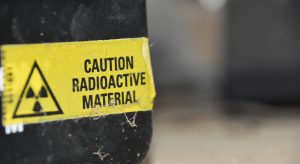
© iStock/tzahiV
Making nuclear fit for the future relies on research and innovation, aiming at safer and cleaner nuclear technologies. The EC provides financial support to research and development through the Euratom Research and Training Programme – focusing mainly on safety and regulatory aspects of conventional, as well as advanced, nuclear technologies and SMRs.
With regards to the fission research, more than two thirds of resources are earmarked for nuclear safety, radiation protection, and radioactive waste management projects.
Fusion research aims to support the ITER project – the world’s largest fusion experiment – and to prepare the ground to take the results of the ITER project further in the future.
Fusion holds the potential to be used as a clean and safe energy source in the second half of this century. Yet, the European investment in ITER is already bringing benefits in terms of creation of knowledge and industrial development in a number of areas with a clear spill-over effect in fission, space, robotics, or health.
Through the Euratom Research and Training Programme, the Commission notably supports research related to safety and licencing aspects of SMR technologies, with a budget of €16m, and future projects in the same field will complement this action until 2025 with an additional indicative budget of €23m.
For the preparation of the necessary basis for the safe deployment of the SMR technology, the Commission is facilitating the co-operation between the EU Member States, European industry actors, policymakers, regulators, utilities (end-users), as well as research and financial institutions.
One key element of the successful development and deployment of SMRs in or outside of the EU would be the possibility to manufacture these reactors in series, without the need to modify their design each time they would be installed in a different country.
Licencing will be a key issue for the rollout of SMRs. In the EU, licencing is a national responsibility and the Commission’s role is to support common approaches and best pathways for safety assessments and licencing among interested regulators in the frame of the European Nuclear Safety Regulators Group (ENSREG) to ensure the safest possible development of SMRs in the next decade and beyond.
Modern nuclear energy technologies, and SMRs in particular, can also play as an important role in co-generation/sector coupling as, for example, district heating, industrial process heat, and hydrogen production.
In the EU Hydrogen Strategy, published in July 2020, the hydrogen produced by nuclear energy is recognised as low carbon hydrogen, which could play an important role in the decarbonisation.
SMRs are also attractive for their ability for flexible power generation, allowing them to work in concert with variable renewable sources to ensure stable power production.
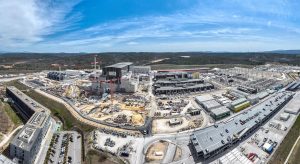
© ITER Organization
What are the main challenges and criticisms surrounding nuclear energy in Europe? How can the major concerns be alleviated?
The most common questions from the public are aimed at nuclear safety and nuclear waste management. Increasing costs and long lead times for the construction of new installations are also frequently criticised.
We focus on nuclear safety as our main objective, which in the current geopolitical situation needs to be emphasised more than ever. We have enshrined in our legislation the principle of continuous improvement of nuclear safety.
From the onset of the war, we have been in contact with Ukrainian nuclear regulatory authority and provided support in the area of nuclear safety through various channels.
Another issue on top of the agenda currently is nuclear security. Targeting of nuclear facilities in the Chernobyl Exclusion Zone, and later on even the operating nuclear power plant in Zaporizhzhia, the largest in Europe, raised very serious public concerns about nuclear security.
In the current geopolitical context, a further issue is the security of supply of nuclear fuel. Some EU Member States are currently partially or fully dependent on Russian nuclear fuel for their Russian-designed reactors. In co-operation with Member States, we are accelerating our efforts to provide alternative fuel supplies for such reactors in the EU.
The EU nuclear industry has moved into a phase characterised by increased activities in the back end of the lifecycle, i.e. decommissioning of shut-down nuclear installations and the radioactive waste management. We are addressing all of these through our regulatory framework. We are also ensuring the application of the highest nuclear safety standards by national regulators.
How are you working to assess and improve the safety and security of nuclear energy in Europe? What are the key areas for improvement?
Achieving the highest level of nuclear safety within the EU is an absolute priority, coupled with the promotion of this principle beyond the EU’s borders. Accordingly, we have enshrined in our legislation the principle of continuous improvement of nuclear safety, both for new and existing reactors, in line with the latest international standards.
The EU has developed a legal framework to ensure that the Member States using nuclear energy do so while meeting the highest standards on nuclear safety, radioactive waste management, radiation protection and non-proliferation, in line with the Treaty establishing the European Atomic Energy Community (Euratom).
This legal framework was strengthened as part of the response to the Fukushima accident, with the introduction of an ambitious EU-wide Nuclear Safety Objective, calling for significant safety enhancements in the design of new and existing reactors in line with the latest international standards.
We also have in place strict requirements to ensure that radioactive waste is managed safely and responsibly, including its safe disposal, without any undue burdens transferred to the next generations.
Following the Fukushima accident in Japan, European countries co-operated in the comprehensive safety nuclear assessments of all EU nuclear power plants, or ‘EU stress tests’, which resulted in safety improvements in all power reactors. As part of the strengthening of the legal framework, we have now set up a regular European system of topical peer reviews, taking place every six years, to cover a specific safety issue. The first peer review (2017-2018) covered the ageing-management of NPPs and research reactors – key to support decisions on long-term operation. The second peer review, taking place in 2023-2024, is currently under preparation. It focuses on fire protection.
Recently, the Commission adopted its second report on progress in implementation of the Nuclear Safety Directive, which concludes that there is, overall, a good level of implementation of the Directive’s obligations in Member States. However, it identifies further areas of improvement and recommends EU action areas such as: the continued development of expertise and skills of licensees and preservation of knowledge, increasing consistency of the application of the nuclear safety objective, further enhancing the competent regulatory authority’s effective independence, transparency and public participation and safety culture. The Commission will work together with Member States and European safety regulators in ENSREG to develop common approaches at EU level and further increase the level of nuclear safety across the EU.
Furthermore, we are making efforts to ensure that the highest possible safety standards are also applied in non-EU countries too – by supporting their participation in EU ‘stress tests’ and/or the EU topical peer reviews, and through technical assistance under a dedicated EU instrument for international nuclear safety co-operation.
The financial constraints attached to the development of nuclear power are significant. How can we ensure that nuclear power is a financially sustainable energy source in the future?
It is well known that nuclear has relatively low operating costs, but requires high initial amounts of capital under uncertain conditions and long-term return on investment. For the Commission, ensuring that the highest safety standards are applied is the guiding principle for all activities in the nuclear energy sector, such as long-term operation of nuclear power plants or new builds. This is a conditio sine qua non for the EU to benefit from the development of new nuclear fission technologies.
For private investors, the green transition will be a major opportunity. In order to meet the EU’s climate and energy targets for 2030 and reach the objectives of the European Green Deal, it is fundamental to direct investments towards sustainable projects and activities. The EU taxonomy is a classification system, establishing a list of environmentally sustainable economic activities.
Taking account of scientific advice and current technological progress, as well as varying transition challenges across Member States, the Commission recognised the role for nuclear (and natural gas) in the transition towards climate neutrality by 2050 in the EU Taxonomy Delegated Act. The European Parliament voted not to object to the Delegated Act.
Massimo Garribba
Deputy Director-General for Energy
European Commission
https://ec.europa.eu/info/departments/energy_en
https://twitter.com/Energy4Europe
https://www.youtube.com/channel/UC54-wrXsb11XOdqWcSi2_XQ
Please note, this article will also appear in the eleventh edition of our quarterly publication.

